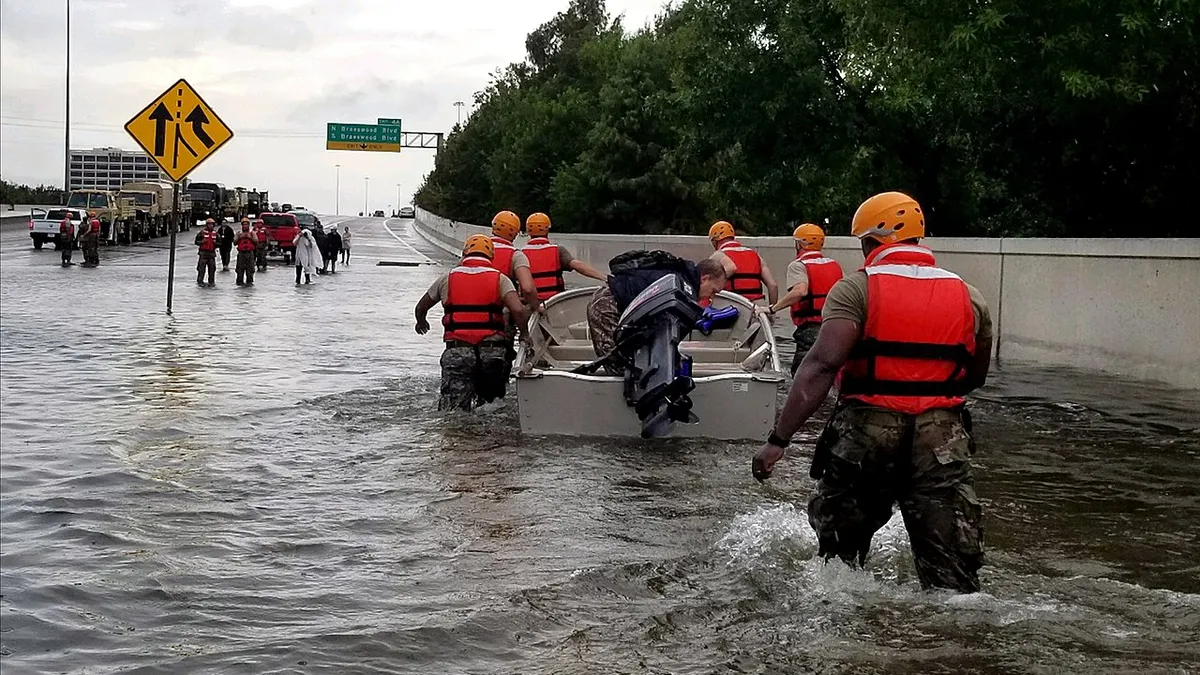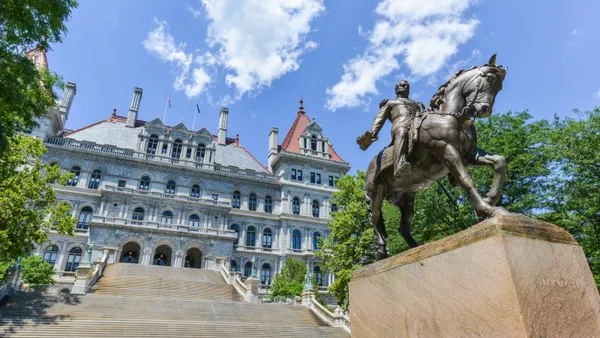Dive Brief:
- Harris County, TX, has enacted a set of new construction regulations for work in flood zones, according to the Associated Press, following Hurricane Harvey's widespread damage to the area in late August. The new rules will only apply to unincorporated areas of Harris County, not the city of Houston.
- New homes and certain other structures within a 100-year floodplain, KTRK reported, must be built to 500-year floodplain standards beginning Jan. 1. Some homes, according to the AP, will have to be elevated as much as eight feet. In any given year, there is a 0.2% chance of a 500-year flood, but Harvey was the third 500-year flood event in the Houston area since 2015.
- Officials said nearly 31,000 homes in unincorporated areas of Harris County flooded during Harvey and the new regulations have received support from local developers and building industry groups. However, the move is likely to increase the price of a home by thousands of dollars.
Dive Insight:
According to The Architect's Newspaper, damage estimates from Harvey have risen to $180 billion, prompting Texas Gov. Greg Abbot and other state lawmakers to push for the $61 billion Rebuild Texas plan, which would attempt to "future proof" coastal Texas cities against such devastating storms and flood events.
After Superstorm Sandy, New Jersey also enacted new building regulations, including a freeboard requirement, which requires that buildings incorporate a buffer between Federal Emergency Management Agency (FEMA) floodplain heights and the first floor of living space. Freeboard buffer height plays into how high insurance companies set homeowner's insurance premiums and deductibles, so this has reportedly encouraged property owners to increase elevation.
However, FEMA took a hit when it came out with new maps post-Sandy, as some argued that the agency was being too aggressive in placing properties into higher hazard areas and changing elevations. All of these changes, critics said, left them with unwarranted higher insurance premiums.
Florida, led by Broward and Miami-Dade counties some would say, also revamped its building codes after 1992's Hurricane Andrew devastated South Florida. The storm destroyed more than 60,000 homes, according to ABC News, and left another 100,000 in dire need of repair. Building codes changes since then have focused on high-impact design and the ability of the roof and underlying structures to withstand hurricane-force winds.














